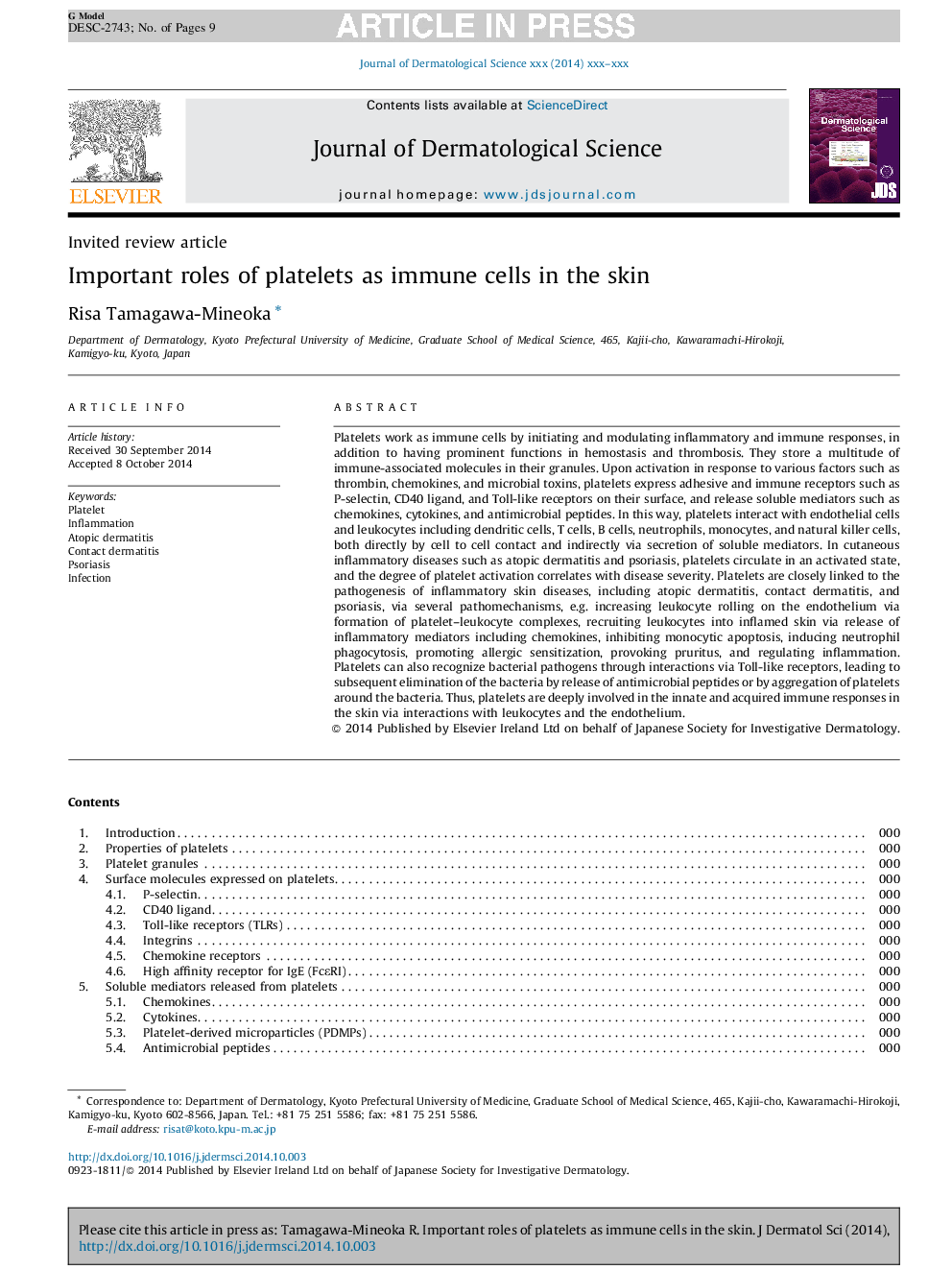| کد مقاله | کد نشریه | سال انتشار | مقاله انگلیسی | نسخه تمام متن |
|---|---|---|---|---|
| 6074250 | 1203200 | 2015 | 9 صفحه PDF | دانلود رایگان |
عنوان انگلیسی مقاله ISI
Important roles of platelets as immune cells in the skin
ترجمه فارسی عنوان
نقش پلاکت ها به عنوان سلول های ایمنی در پوست
دانلود مقاله + سفارش ترجمه
دانلود مقاله ISI انگلیسی
رایگان برای ایرانیان
کلمات کلیدی
پلاکت، التهاب درماتیت آتوپیک، تماس با درماتیت، پسوریازیس، عفونت،
موضوعات مرتبط
علوم پزشکی و سلامت
پزشکی و دندانپزشکی
امراض پوستی
چکیده انگلیسی
Platelets work as immune cells by initiating and modulating inflammatory and immune responses, in addition to having prominent functions in hemostasis and thrombosis. They store a multitude of immune-associated molecules in their granules. Upon activation in response to various factors such as thrombin, chemokines, and microbial toxins, platelets express adhesive and immune receptors such as P-selectin, CD40 ligand, and Toll-like receptors on their surface, and release soluble mediators such as chemokines, cytokines, and antimicrobial peptides. In this way, platelets interact with endothelial cells and leukocytes including dendritic cells, T cells, B cells, neutrophils, monocytes, and natural killer cells, both directly by cell to cell contact and indirectly via secretion of soluble mediators. In cutaneous inflammatory diseases such as atopic dermatitis and psoriasis, platelets circulate in an activated state, and the degree of platelet activation correlates with disease severity. Platelets are closely linked to the pathogenesis of inflammatory skin diseases, including atopic dermatitis, contact dermatitis, and psoriasis, via several pathomechanisms, e.g. increasing leukocyte rolling on the endothelium via formation of platelet-leukocyte complexes, recruiting leukocytes into inflamed skin via release of inflammatory mediators including chemokines, inhibiting monocytic apoptosis, inducing neutrophil phagocytosis, promoting allergic sensitization, provoking pruritus, and regulating inflammation. Platelets can also recognize bacterial pathogens through interactions via Toll-like receptors, leading to subsequent elimination of the bacteria by release of antimicrobial peptides or by aggregation of platelets around the bacteria. Thus, platelets are deeply involved in the innate and acquired immune responses in the skin via interactions with leukocytes and the endothelium.
ناشر
Database: Elsevier - ScienceDirect (ساینس دایرکت)
Journal: Journal of Dermatological Science - Volume 77, Issue 2, February 2015, Pages 93-101
Journal: Journal of Dermatological Science - Volume 77, Issue 2, February 2015, Pages 93-101
نویسندگان
Risa Tamagawa-Mineoka,
